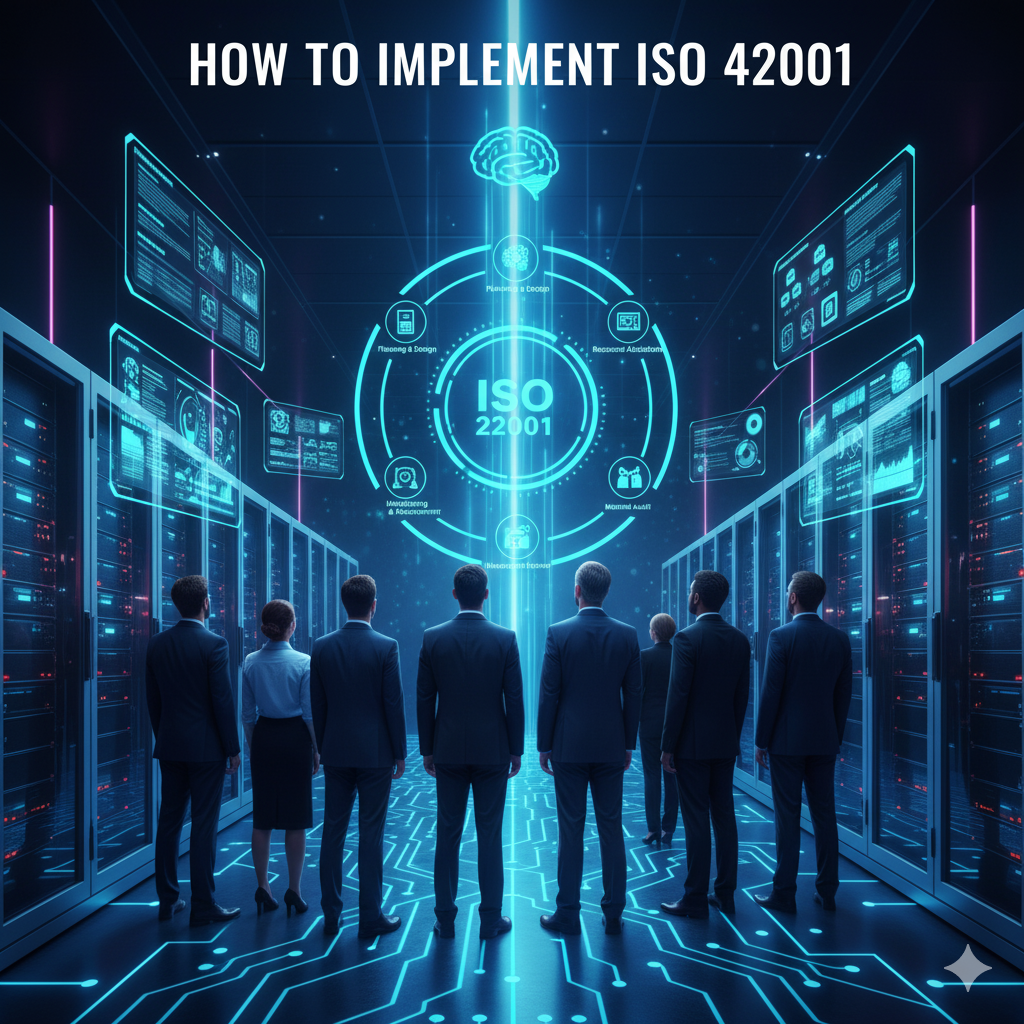AI upskilling strategy refers to a structured plan for developing workforce capabilities to work effectively with artificial intelligence technologies across an organization.
Artificial intelligence has become essential for business operations across nearly every industry. Organizations worldwide recognize that their workforce needs new skills to remain competitive. However, most companies struggle to translate this awareness into effective action.
Research from Boston Consulting Group shows that while 89 percent of business leaders acknowledge their workforce requires improved AI capabilities, only 6 percent have begun meaningful upskilling efforts. This gap between recognition and implementation creates significant challenges for organizations attempting to leverage AI technologies effectively.
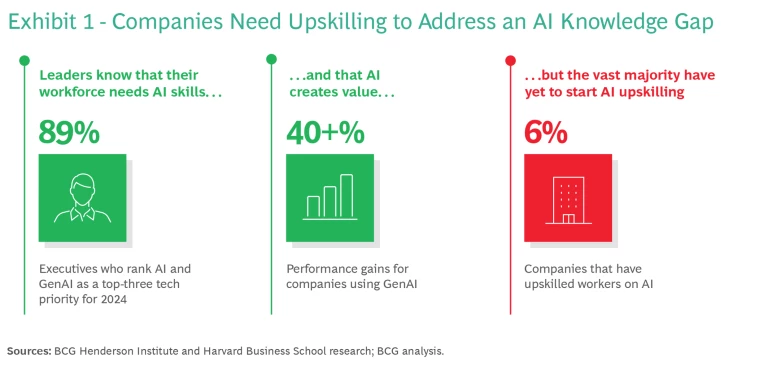
The rapid pace of AI advancement compounds these challenges. Technical skills in AI fields become obsolete within 2.5 to 5 years, according to multiple industry studies. Workers must continuously update their capabilities to remain relevant in an AI-driven workplace.
What AI Upskilling Strategy Includes
AI upskilling strategy covers multiple categories of workforce development designed to prepare employees for AI-augmented work environments. The National Institute defines AI literacy as the foundational skills and knowledge that enable informed decisions about AI deployment and awareness of associated opportunities and risks.
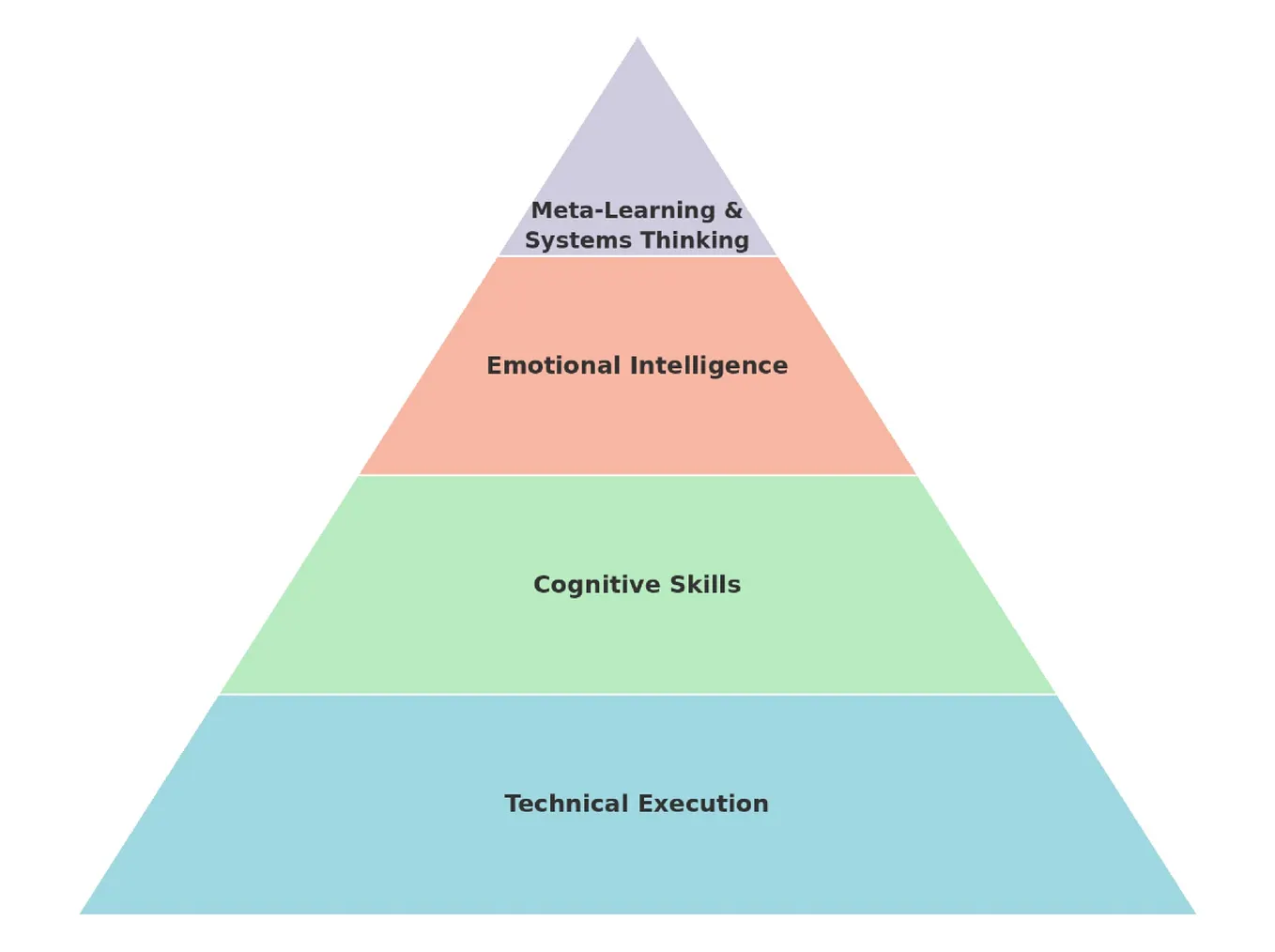
Basic AI literacy forms the foundation for all employees regardless of their specific roles. Workers need to understand AI capabilities and limitations to make informed decisions about when and how to use AI tools. Advanced technical skills serve specialized roles including data scientists, AI engineers, and system architects who build and maintain AI solutions.
Role-based customization ensures training aligns with specific job functions and responsibilities. Executive leaders require strategic understanding of AI investment decisions and risk management. Technical teams need hands-on experience with machine learning frameworks and model development. Frontline workers focus on practical application of AI tools in daily tasks.
Organizations typically organize AI skills into hierarchical frameworks with clear progression paths. IBM’s approach distinguishes between AI awareness for general employees, AI builders who develop solutions, and AI masters who solve complex business challenges through sophisticated AI applications.
Why Organizations Build AI Upskilling Programs
Business competitiveness drives most AI upskilling initiatives as organizations recognize that AI capabilities have become essential for market success. The World Economic Forum research indicates that 40 percent of workers’ core skills will change significantly by 2030, while 63 percent of employers identify skills gaps as their primary barrier to business transformation.

Productivity improvements represent immediate benefits from AI upskilling programs. MIT research examining AI’s labor market impact reveals that organizations investing in comprehensive upskilling see employment growth rather than decline in high-exposure roles when workers learn to complement AI capabilities effectively.
Risk management motivates many upskilling efforts as organizations seek to ensure responsible AI deployment. Proper training helps employees recognize potential AI risks, understand governance requirements, and contribute to ethical AI practices throughout their organizations. This becomes particularly critical when implementing AI agents in sales where customer interactions require careful oversight.
Core Components of Successful AI Training Programs
Strategic alignment ensures upskilling initiatives support specific business objectives rather than pursuing technology adoption without clear purpose. McKinsey research emphasizes beginning with business outcomes and identifying how AI investments enable those outcomes before defining required skills and target populations.
Curriculum design addresses multiple capability dimensions from conceptual understanding to practical application skills. Effective programs employ crawl-walk-run progressions that begin with basic experimentation and gradually advance toward transformation and innovation through incremental skill building.
Assessment mechanisms track progress across multiple dimensions including skills acquisition, behavioral change, and business impact. Organizations measure completion rates and satisfaction scores for operational management while tracking productivity gains and performance improvements to demonstrate program value. Running an AI maturity assessment helps establish baseline capabilities before training begins.
Leadership support proves critical for program success with employee engagement closely correlated to visible commitment from organizational leaders. When leaders demonstrate strong AI support, frontline employees show significantly higher adoption rates and positive attitudes toward career prospects in AI-augmented environments.
How to Implement AI Upskilling Step by Step
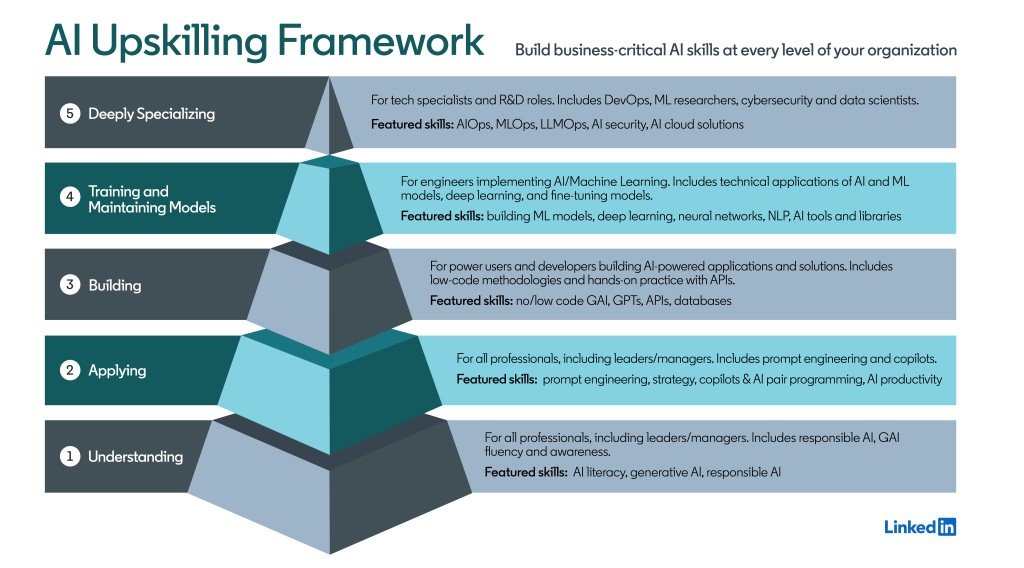
Define Strategic Objectives and Success Metrics
Organizations begin by connecting AI upskilling goals to specific business outcomes rather than pursuing technology for its own sake. Clear strategic alignment ensures training investments target capabilities that matter most for organizational performance.
Success metrics span multiple dimensions beyond traditional training measures like completion rates. Organizations track skill acquisition through practical demonstrations, behavioral change through AI tool adoption patterns, performance improvements through productivity gains, and business impact through contribution to strategic objectives.
Conduct Skills Gap Assessment
Skills assessment reveals the current state of AI capabilities across the workforce and identifies priority areas for development. This evaluation extends beyond technical skills to encompass AI literacy, governance understanding, and readiness for change.
Organizations use multiple assessment methods including surveys, interviews, practical demonstrations, and analysis of current tool usage patterns. Assessment data establishes baselines for measuring program effectiveness and identifies employees who can serve as champions during implementation.
Design Role-Specific Training Content
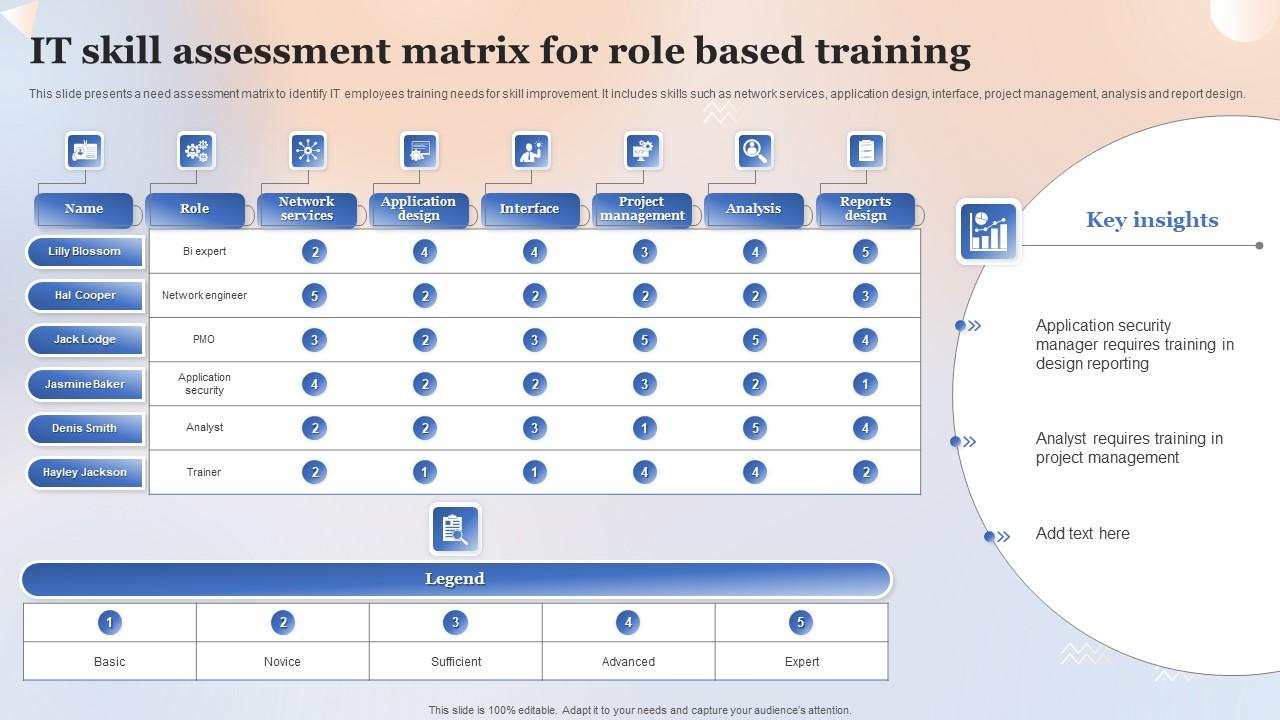
Training design reflects the reality that different roles require distinctly different AI capabilities. Rather than one-size-fits-all approaches, effective programs create targeted learning paths based on how different positions engage with AI technologies.
- Executive training — focuses on strategic decision-making, investment priorities, and governance frameworks
- Technical roles — receive deep training in model development, deployment, and maintenance
- Domain experts — learn to shape AI solutions for their specific use cases, including AI for sales prospecting
- Frontline workers — develop proficiency with AI tools that augment their daily tasks
Launch Pilot Programs with Early Adopters
Pilot programs test training approaches with willing participants before committing resources to organization-wide deployment. Early adopters provide feedback that improves program design while demonstrating value to skeptical employees.
Organizations select pilot participants based on enthusiasm, influence within their teams, and representation of key populations that will eventually participate in full-scale programs. Pilot implementation generates data about completion rates, learning effectiveness, practical application, and participant satisfaction.
Overcoming Common Implementation Challenges
Address Job Displacement Fears
Job displacement fears represent the most significant barrier to AI training engagement. Employees worry that learning AI skills means training their own replacement or participating in their eventual elimination from the workforce.
Clear communication about AI’s intended role helps address these fears through specific messaging about augmentation versus replacement. Organizations benefit from explaining that AI automates tasks rather than eliminating entire jobs, and that the goal involves elevating human work to more strategic activities. Understanding the difference between agentic AI vs generative AI helps clarify these distinctions.
Career security reassurances require concrete commitments rather than vague promises. Successful approaches include documenting policies about retraining over termination, creating internal mobility programs for workers whose roles change, and establishing transition timelines that provide adequate preparation time.
Provide Psychological Safety for Learning
Psychological safety creates environments where employees feel comfortable acknowledging knowledge gaps and making mistakes during learning processes. Adult learners, particularly those with established expertise, often experience discomfort when acquiring skills that differ from their existing competencies.
Learning AI requires experimentation and iteration, which naturally involves failures and mistakes. Organizations create safety by explicitly communicating that errors during learning represent normal parts of the process rather than performance problems.
Protected learning time and spaces allow employees to explore AI tools without pressure to produce immediate results. Some organizations designate specific hours for AI experimentation or create sandbox environments where workers can practice without affecting production systems.
Measuring AI Training Program Success
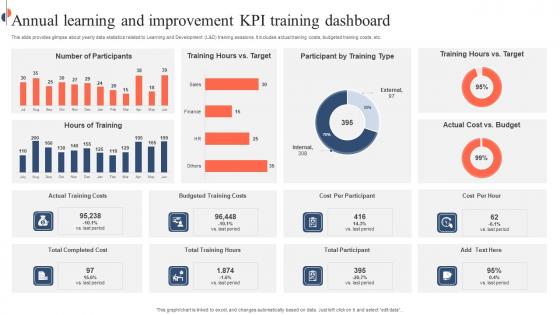
Organizations measure AI upskilling program effectiveness through multiple dimensions that capture different types of value creation. Traditional training metrics like completion rates and satisfaction scores provide operational insights but reveal little about actual capability development or business impact.
Productivity and Efficiency Gains
Organizations track workflow improvements by measuring time savings across specific tasks and processes. Baseline measurements establish how long activities take before AI training, followed by post-training assessments that quantify efficiency improvements.
Output quality enhancements appear through reduced error rates, improved accuracy scores, and higher customer satisfaction ratings. Many organizations observe that employees complete routine tasks faster after AI training, freeing time for higher-value activities that require human judgment and creativity. This proves especially valuable in call center implementations where efficiency gains directly impact customer experience.
AI Tool Adoption Rates
Usage frequency measurements track how often employees engage with AI tools after completing training. Low adoption rates may indicate insufficient training, usability issues, or cultural barriers that prevent practical application.
Feature utilization analysis reveals which AI capabilities employees actually use versus those they ignore. Organizations often discover that complex features require additional training or simplified interfaces to achieve meaningful adoption.
Proficiency development tracking follows skill progression over time through performance assessments and observation of real work. Effective programs show steady improvement in AI tool mastery across multiple months following initial training.
Employee Engagement Metrics
Job satisfaction surveys measure employee attitudes toward their work before and after AI upskilling programs. Employees who receive effective AI training often report feeling more capable and confident in their roles.
Career development satisfaction tracks whether employees perceive AI skills as valuable for professional growth. Workers who see clear connections between AI capabilities and advancement opportunities typically show higher engagement levels with training programs.
Building Long-Term AI Learning Culture
Creating a culture where AI learning thrives requires more than launching training programs. Organizations that succeed in the long term embed learning into their daily operations and reward curiosity about new technologies.
The most effective approach starts with leadership demonstrating their own learning journey. When executives share their struggles with AI tools and celebrate small wins, employees feel safer experimenting with new technologies.
Cultural transformation strategies help organizations sustain AI learning over time:
- Normalize experimentation failures — treat unsuccessful AI experiments as learning opportunities rather than mistakes
- Implement regular AI office hours — schedule sessions where employees can ask questions about AI tools without judgment
- Establish cross-functional AI communities — form groups that bring together people from different departments to share AI use cases
- Allocate protected learning time — set aside specific hours each week for AI exploration and training
- Create mentorship pairs — match AI-curious employees with colleagues who have more experience
The pace of AI advancement means learning can’t stop after initial training. Organizations maintain relevant skills by staying connected to AI developments and adjusting their training approaches as new tools emerge.
Frequently Asked Questions About AI Upskilling Strategy
How long does it take employees to become productive with AI tools after training?
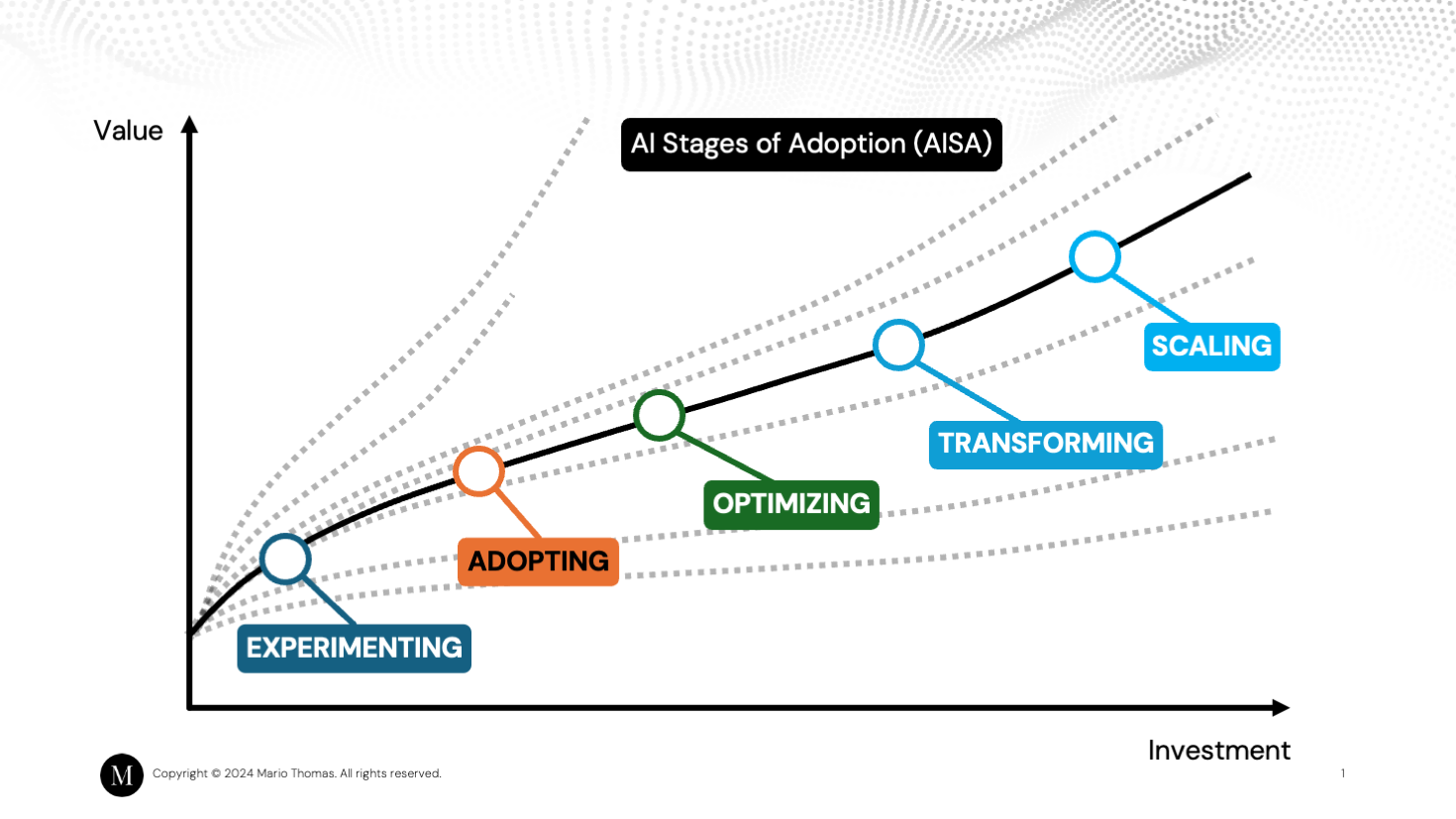
Most employees begin using AI for straightforward activities like email drafting, data analysis, and document creation within weeks of training completion. However, developing advanced proficiency with complex AI applications typically takes three to six months of regular practice.
The timeline depends on the employee’s existing technical skills, the complexity of the AI tools being implemented, and the level of ongoing support provided. Organizations often see initial productivity improvements within the first month, with more substantial gains emerging over subsequent months.
What percentage of employees typically participate in AI upskilling programs?
Participation rates vary significantly based on program design and organizational culture. Voluntary programs typically see 40 to 60 percent participation among eligible employees, while mandatory training achieves near-universal completion but may have lower engagement levels.
Organizations that start with enthusiastic early adopters and gradually expand often achieve higher overall participation and better learning outcomes compared to those implementing company-wide mandatory training from the beginning.
Which departments typically show the fastest AI adoption after training?
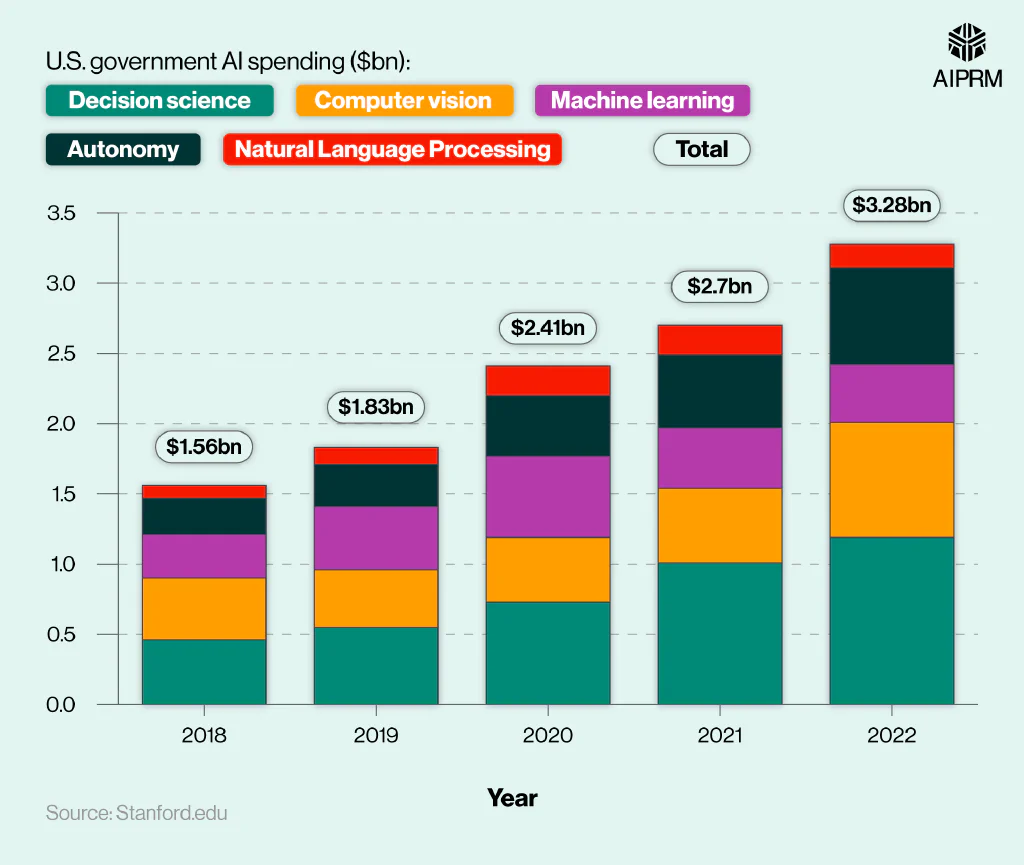
Marketing, customer service, and data analysis teams typically demonstrate the fastest AI adoption rates following training programs. These departments often have clear use cases where AI tools provide immediate value, such as content creation, customer inquiry handling, and data processing.
Technical teams like IT and engineering may take longer to adopt AI tools because they require more sophisticated implementations and integration with existing systems. However, once adopted, technical teams often develop the most advanced AI capabilities within their organizations. This pattern particularly emerges when exploring advanced concepts like AI agent memory and perception systems.
How do organizations handle employees who struggle with AI tool adoption?
Successful organizations provide multiple support mechanisms for employees who find AI adoption challenging. These include one-on-one mentoring, simplified training modules, additional practice time, and peer support groups where employees can learn from colleagues.
Some organizations discover that employees who initially struggle with AI tools excel once they find applications that directly relate to their daily work challenges. Personalizing AI use cases to individual job responsibilities often improves adoption success rates.
What ongoing support do employees need after completing AI training?
Employees benefit from continued access to help resources, regular updates on new AI features, and opportunities to share experiences with colleagues. Many organizations establish internal communities where employees can ask questions and share best practices.
Technical support becomes particularly important as employees encounter specific challenges or want to implement more advanced AI applications. Organizations often designate AI champions within each department who can provide immediate assistance and escalate complex issues to technical teams.
Future-Proofing Your AI Workforce Strategy
As artificial intelligence technologies continue their rapid evolution, organizations must prepare for emerging trends that will reshape workforce requirements and capabilities. The next wave of AI advancement introduces autonomous agents capable of complex reasoning and multi-step task execution, requiring workers to develop new skills in human-AI collaboration at unprecedented levels of sophistication.
Agentic AI systems that can independently plan, execute, and adapt their approaches represent a fundamental shift from current AI tools that primarily provide recommendations or automate specific tasks. This evolution demands workforce capabilities in agent oversight, goal setting, constraint definition, and collaborative problem-solving where human judgment guides AI autonomy.
The integration of multimodal AI capabilities creates opportunities for more intuitive human-AI interaction while requiring workers to understand how to leverage these enhanced communication channels effectively. Organizations must prepare their workforce to engage with AI systems that can understand context across multiple formats and respond through various media types.
By implementing comprehensive AI upskilling strategies now, organizations position themselves to capture the full potential of AI transformation while ensuring their workforce remains relevant, engaged, and productive in an increasingly AI-driven future. The successful organizations of tomorrow will be those that build adaptive learning cultures today — cultures that view continuous skill development as fundamental to operations rather than supplementary to them.

